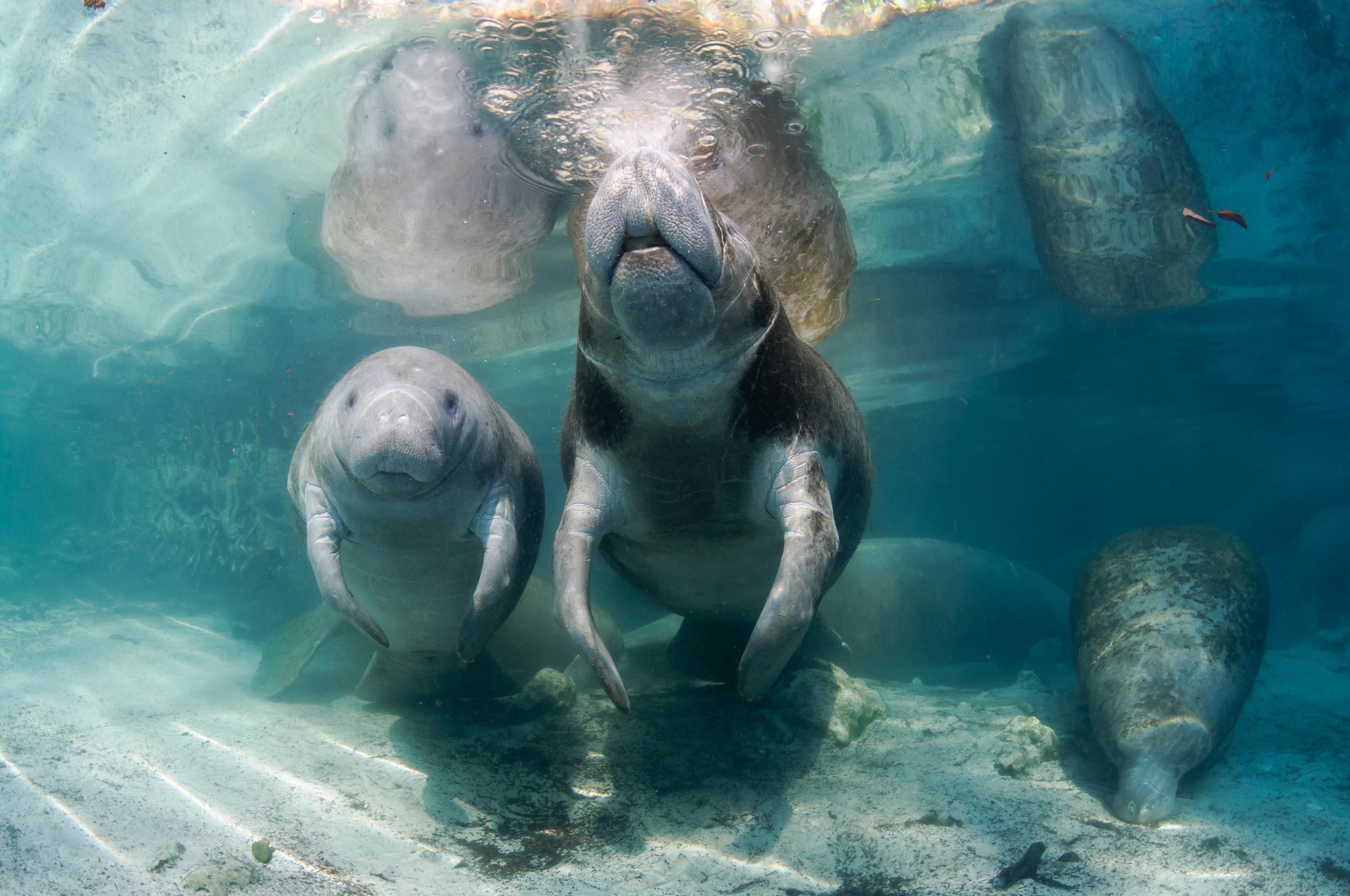The manatees and dugongs, commonly known as sea cows, belong to the family called “Sirenia”. This name reflects the fact that they were mistaken by sailors for sirens or mermaids. The Sirenians are herbivorous aquatic mammals primarily found along tropical coastlines of the world. Over tens of thousands of years, these gentle giants have developed wonderful adaptations to living in the aquatic environment.
Living mostly underwater and moving through very dark conditions poses some specific challenges in how to perceive your environment and the manatee has come up with some fascinating strategies to overcome these challenges. Not only do they have unique aspects to their senses of smell, taste, vision, touch, and hearing, but they have a novel sensory system that exists nowhere else in the world!
Manatees’ range of hearing is fairly narrow which is reflected by the range of their vocalizations which is approximately 3-24 kHz. Manatees’ chirps or calls consist of several notes and are unique to every individual. Each manatee has its own call which remains the same its whole life and it is the main way that mothers and calves communicate with each other. Their sensitivity to high frequencies may be an adaptation to shallow water, where the movement of low-frequency sound is limited by physical boundaries.
Most of the life of a manatee is spent in very murky water and they are also active throughout the night in the dark. For this reason, manatees do not need to have perfect vision and are reported to be practically nearsighted, however, they have receptors for both blue and green wavelengths allowing them to see in color and can therefore differentiate between random objects and luscious green plants to eat. We know that identifying food sources in the wild is incredibly important to manatees!
Like other mammals, the manatee’s senses of smell and taste are closely related to each other as the chemical receptors responsible for detecting odors and flavors lie adjacent to one another. Their sense of taste and smell allows them to determine the quality and potential toxicity of things that go in their mouths, but more importantly function as a method of communication. Using specialized receptor cells male manatees can detect if a female is in estrus and determine the health of individuals of both sexes by sensing other chemical compounds emanating from their urine and anal glands.
The manatee’s sense of touch is extremely sensitive and most likely their predominant form of sensory perception. They are very tactile creatures in that they explore their world through manipulating things primarily with their mouths, however, they also use the rest of their body as a sensory organ to take in information from the environment. We often notice that manatees use their fins just like hands....and they love to touch everything!
In the process of adapting to the low visibility aquatic habitat manatees have developed a unique sense which is made up of a series of hairs concentrated on their face and distributed across their body. Each hair is stimulated by up to hundreds of nerve cells and they work similarly to a lateral line system found in many species of fish. As manatees move through very murky water or during the night in the pitch dark, thousands of tiny hairs are stimulated by objects in their environment and actually give the animal an image of those objects without having to physically see them. AMAZING!
All together Sirenian’s six senses, (hearing, vision, smell, taste, touch, and hair follicle system), are made up of a network of physical and chemical receptors that form an intricate sensory system that has enabled them to thrive and multiply in shallow and sometimes dark and murky aquatic environments. These factors all contribute to the survival of these fascinating beasts... .and once you meet one you will understand why we love them so much!

